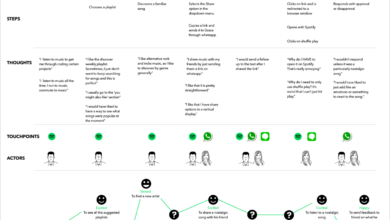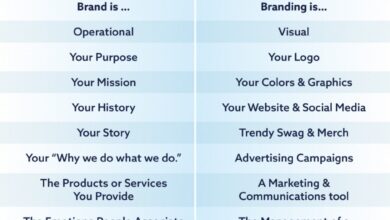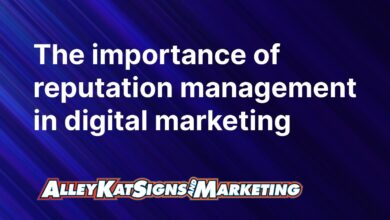
The Benefits of Branding and Why Businesses Should Bother
The benefits of branding and why businesses should bother are more significant than many realize. It’s not just about a logo; it’s about crafting a compelling narrative that resonates with your customers, builds trust, and ultimately drives growth. Think of your favorite brands – what makes them stand out? It’s likely a combination of consistent messaging, memorable visuals, and a strong brand identity that has fostered loyalty and recognition.
This post dives deep into why investing in your brand is one of the smartest business decisions you can make.
From increased brand recognition and customer loyalty to attracting top talent and securing investment, the power of a well-defined brand strategy is undeniable. We’ll explore how to build a brand that not only attracts new customers but also keeps them coming back for more. We’ll also look at real-world examples and actionable strategies you can implement today to boost your brand’s impact and bottom line.
Increased Brand Recognition and Recall
Building a strong brand isn’t just about creating a logo; it’s about crafting a consistent experience that resonates with your target audience. This consistency, across all touchpoints – from your website and social media to your packaging and customer service – is the key to boosting brand recognition and recall. When customers consistently encounter your brand elements, they become familiar and ultimately, memorable.
This familiarity translates into higher brand awareness and an increased likelihood that they’ll choose your product or service over a competitor’s.Consistent branding fosters brand awareness by creating a cohesive and recognizable identity. Repeated exposure to your brand’s visual elements (logo, color palette, typography), messaging, and overall tone cultivates familiarity and trust. This familiarity then translates into improved recall – customers are more likely to remember your brand when they’re making a purchase decision, especially when faced with similar offerings.
The more consistent your branding, the stronger the association between your brand and its associated qualities (e.g., reliability, quality, innovation).
Successful Branding Campaigns and Increased Recognition
Nike’s “Just Do It” campaign is a prime example of successful branding that led to increased recognition. The simple yet powerful slogan, coupled with iconic imagery of athletes pushing their limits, created a powerful and enduring brand association. Similarly, Apple’s minimalist aesthetic and focus on user experience have built unparalleled brand recognition and loyalty. Their consistent messaging, design language, and retail experience contribute to a strong and easily recalled brand identity.
These campaigns demonstrate that investing in a well-defined and consistently applied brand strategy can yield significant returns in terms of recognition and market share.
Hypothetical Branding Strategy for a New Startup: “EcoBloom”
Let’s imagine a new startup, “EcoBloom,” specializing in sustainable and ethically sourced plant-based skincare. Their branding strategy would focus on creating a visual identity that evokes natural beauty and environmental consciousness. This would include:* Logo: A stylized leaf incorporating the company name in a calming, earthy green font.
Color Palette
Earthy tones (greens, browns, creams) to communicate natural ingredients and sustainability.
Typography
A clean, modern sans-serif font for readability and a sense of sophistication.
Messaging
Emphasizing natural ingredients, ethical sourcing, and sustainable practices.
Packaging
Using recycled and biodegradable materials, featuring the logo and key messaging prominently.
Social Media
Consistent posting with high-quality images and videos showcasing the product’s natural beauty and the company’s commitment to sustainability.This cohesive branding strategy would ensure that EcoBloom’s message and visual identity are consistent across all platforms, thereby improving brand recall and making it easily identifiable within the competitive skincare market.
Real-World Case Studies: Branding’s Impact on Customer Memory, The benefits of branding and why businesses should bother
A study by Millward Brown showed that brands with strong brand equity (a measure of brand recognition and loyalty) enjoy higher customer recall and purchase intent. Companies that invest in building a strong brand identity are more likely to be remembered and chosen by consumers. For instance, the consistent use of the Coca-Cola logo and its iconic red color across decades has ensured that it remains one of the most recognizable brands globally, demonstrating the long-term impact of consistent branding on customer memory.
Another example is the distinctive Starbucks logo, instantly recognizable worldwide, demonstrating the power of consistent visual branding in creating memorable brand experiences. These case studies underscore the importance of investing in a well-defined and consistently applied brand strategy to enhance customer memory and loyalty.
Enhanced Customer Loyalty and Trust
Strong branding isn’t just about creating a memorable logo; it’s about building a deep and lasting relationship with your customers. A well-crafted brand fosters loyalty and trust, leading to repeat business and positive word-of-mouth referrals – crucial elements for long-term success. This translates to increased profitability and a more resilient business in the face of market fluctuations.A strong brand consistently delivers on its promises, creating a positive experience that customers remember and value.
This consistency, whether it’s in product quality, customer service, or brand messaging, is the cornerstone of building trust. Customers who trust a brand are more likely to remain loyal, even when faced with cheaper alternatives or aggressive marketing from competitors. In contrast, weak branding, characterized by inconsistent messaging, poor customer service, or subpar product quality, erodes trust and leads to customer churn.
The result is a constant need for expensive acquisition strategies to replace lost customers.
Brand Consistency Fosters Trust
Brand consistency is more than just using the same logo and color scheme everywhere. It’s about maintaining a unified brand voice and personality across all touchpoints – from your website and social media to your customer service interactions and packaging. This consistent experience reinforces the brand’s identity and values in the customer’s mind, creating a sense of familiarity and reliability.
Inconsistency, on the other hand, creates confusion and undermines trust. For example, if a company boasts about its commitment to sustainability but its packaging is not environmentally friendly, it creates a dissonance that damages customer trust. This consistent positive experience builds a strong foundation for long-term relationships. Customers feel understood and valued when interacting with a brand that consistently delivers on its promises and maintains its brand identity.
Customer Loyalty Comparison: Strong vs. Weak Branding
Consider two coffee shops: “Aroma Bliss,” with a strong brand known for its ethically sourced beans, exceptional baristas, and consistently cozy atmosphere, and “Quick Sip,” a generic coffee shop with inconsistent quality and indifferent service. Aroma Bliss customers are fiercely loyal, often becoming regulars who recommend the shop to friends and family. They are willing to pay a premium for the experience.
Quick Sip, on the other hand, struggles to retain customers. People might visit once out of convenience, but are unlikely to return due to the lack of a memorable or positive experience. This highlights the direct correlation between brand strength and customer loyalty: strong brands cultivate loyal customers, while weak brands struggle to retain them.
Positive Brand Experience Leading to Increased Loyalty
Imagine Sarah, a busy professional who discovers “Zenith Planners,” a company specializing in high-quality, minimalist planners. Zenith’s branding is sleek and sophisticated, reflecting Sarah’s personal style. The website is user-friendly, the ordering process is seamless, and the planner itself exceeds her expectations in terms of quality and functionality. Furthermore, Zenith provides excellent customer service, promptly responding to Sarah’s questions and offering personalized recommendations.
This positive experience reinforces Zenith’s brand promise of quality and customer care. Sarah becomes a loyal customer, recommending Zenith to her colleagues and returning to purchase future planners. This positive experience translates into increased brand loyalty and positive word-of-mouth marketing for Zenith, a testament to the power of a strong brand.
Improved Customer Acquisition and Retention
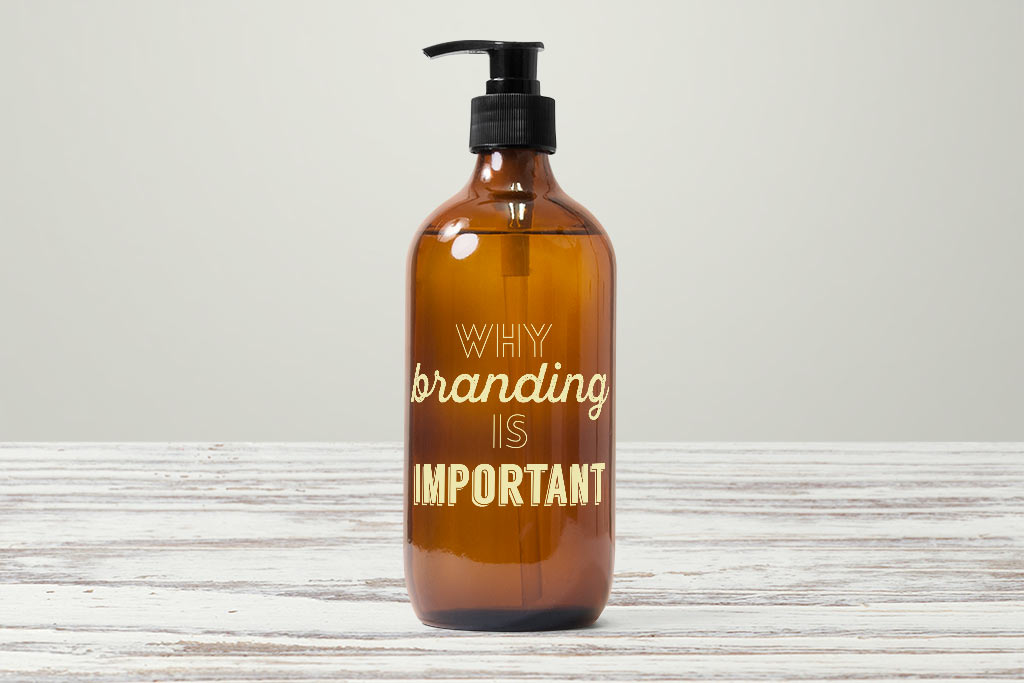
Source: talentedladiesclub.com
A strong brand acts as a powerful magnet, attracting new customers while simultaneously fostering loyalty among existing ones. This isn’t just about flashy logos; it’s about creating a consistent and compelling experience that resonates with your target audience, making your business the obvious choice. Effective branding streamlines the process of attracting and retaining customers, leading to significant long-term growth and profitability.Effective branding significantly impacts both customer acquisition and retention.
A well-defined brand identity clarifies your value proposition, making it easier for potential customers to understand what you offer and why they should choose you over competitors. Conversely, a strong brand fosters loyalty by building trust and creating a positive emotional connection with your customer base, reducing the likelihood of them switching to a rival. This translates directly into lower customer acquisition costs and reduced churn.
Branding Elements Influencing Customer Acquisition
A cohesive brand identity, built on several key elements, is crucial for attracting new customers. These elements work synergistically to create a memorable and appealing image. A poorly defined brand, conversely, can confuse potential customers and hinder growth.
- Brand Name and Messaging: A memorable and relevant name, coupled with clear and concise messaging, immediately communicates your brand’s essence and value proposition. For example, the name “Dove” for a beauty brand subtly conveys gentleness and care, attracting customers seeking those qualities. Similarly, Nike’s “Just Do It” slogan inspires action and ambition, aligning with its target market’s aspirations.
- Visual Identity (Logo, Colors, Typography): Consistent visual elements create brand recognition and recall. Think of the instantly recognizable golden arches of McDonald’s or the distinctive Apple logo. These visual cues trigger positive associations and help customers quickly identify your brand among competitors.
- Brand Voice and Tone: The language you use to communicate with your customers – whether it’s playful, formal, or authoritative – shapes their perception of your brand. A consistent brand voice across all platforms builds trust and strengthens customer relationships. For instance, a luxury car brand would use a sophisticated and refined tone, while a skateboarding company might opt for a more casual and energetic approach.
- Brand Experience: The overall experience a customer has with your brand – from website navigation to customer service interactions – is paramount. A seamless and positive experience reinforces brand loyalty and encourages positive word-of-mouth marketing. For example, a company known for its exceptional customer service builds a strong reputation, attracting customers who value personalized attention and support.
Building a Brand that Attracts and Retains Customers
Building a successful brand is a strategic process that requires careful planning and execution. It’s an ongoing effort, requiring continuous monitoring and adaptation to market trends and customer feedback.
- Define Your Target Audience: Thoroughly understand your ideal customer’s demographics, psychographics, needs, and preferences. This allows you to tailor your brand messaging and marketing efforts to resonate with their specific interests.
- Develop a Unique Value Proposition: Clearly articulate what makes your brand different and better than the competition. What unique benefit do you offer? This should be the cornerstone of your brand messaging.
- Create a Consistent Brand Identity: Develop a comprehensive brand guide that Artikels your brand’s visual elements, messaging, and voice. This ensures consistency across all platforms and touchpoints.
- Build a Strong Online Presence: Establish a professional website and engage with your audience on social media. Use consistent branding across all digital channels.
- Provide Excellent Customer Service: Prioritize exceptional customer service to foster loyalty and encourage positive word-of-mouth referrals. Address customer concerns promptly and efficiently.
- Gather and Analyze Customer Feedback: Regularly solicit and analyze customer feedback to identify areas for improvement and adapt your brand strategy accordingly.
Effective Branding and Reduced Customer Churn
Strong branding directly contributes to lower customer churn. By building trust and loyalty, a well-defined brand reduces the likelihood of customers switching to competitors. For example, a company with a reputation for high-quality products and excellent customer service will retain customers more effectively than a company with a weaker brand identity. This reduces marketing costs associated with constantly acquiring new customers and improves overall profitability.
Strong branding is crucial; it builds recognition and loyalty, ultimately boosting your bottom line. To really amplify your brand message and reach a wider audience, you need to think about your online presence, and that means checking out getting it on with youtube – it’s a game-changer for visibility. Ultimately, a well-defined brand, effectively showcased, is the key to sustainable business success.
A strong brand becomes a powerful asset, fostering customer loyalty and long-term business success.
Higher Perceived Value and Pricing Power
Strong branding isn’t just about recognition; it’s about creating a perception of value that allows you to command higher prices. Consumers are willing to pay more for brands they trust and associate with quality, prestige, or a specific lifestyle. This premium pricing strategy is a direct result of successful branding and the equity it builds.A strong brand justifies premium pricing because it taps into emotional connections and consumer perceptions beyond the product’s inherent features.
It’s about the experience, the story, and the feeling associated with the brand. This intangible value is what allows businesses to charge more than competitors offering similar products.
Brand Examples of Premium Pricing
Several brands successfully leverage their brand equity to justify premium pricing. Consider Apple, known for its sleek design, user-friendly interface, and perceived status. Their products consistently command higher prices than comparable devices from other manufacturers, reflecting their strong brand image and loyal customer base. Similarly, luxury brands like Rolex and Chanel maintain high prices due to their long-standing history, craftsmanship, and association with exclusivity.
These brands have cultivated an image of superior quality and desirability, which allows them to charge significantly more than competitors.
Pricing Strategies: Strong vs. Weak Branding
The pricing strategies for brands with strong versus weak branding differ significantly. Brands with strong brand equity can utilize value-based pricing, focusing on the perceived value rather than solely on production costs. They can often set prices higher than their competitors and still maintain strong sales. Conversely, brands with weak branding often rely on cost-plus pricing or competitive pricing, where prices are primarily determined by production costs and market competition.
They have less flexibility to increase prices without significantly impacting sales.
Perceived Value Comparison of Similar Products
| Product | Brand Strength | Features | Price | Perceived Value |
|---|---|---|---|---|
| Coffee | Strong (Starbucks) | High-quality beans, convenient location, comfortable atmosphere | $5 | High – Premium experience, status symbol |
| Coffee | Weak (Generic Brand) | Standard beans, basic packaging | $1 | Low – Functional, inexpensive |
| Jeans | Strong (Levi’s) | Durable denim, classic design, heritage branding | $100 | High – Quality, longevity, iconic status |
| Jeans | Weak (Unbranded) | Basic denim, simple design | $20 | Low – Functional, inexpensive |
Competitive Advantage and Differentiation
In today’s fiercely competitive business landscape, a strong brand is no longer a luxury; it’s a necessity. A well-defined brand helps businesses cut through the noise and establish a unique position in the minds of consumers, ultimately driving sales and profitability. This competitive edge stems from the ability to differentiate your offering from the myriad of similar products or services available.Branding helps businesses stand out in a crowded marketplace by creating a distinct identity that resonates with their target audience.
This identity encompasses not only the visual elements like logo and color palette but also the brand’s personality, values, and the overall customer experience. A strong brand narrative can forge an emotional connection with consumers, fostering loyalty and advocacy that competitors struggle to replicate. This emotional connection transcends mere product features and specifications, creating a deeper, more meaningful relationship.
Key Differentiators of Successful Brands
Successful brands consistently demonstrate a clear understanding of their target audience and tailor their messaging and offerings to meet specific needs and desires. They don’t try to be everything to everyone; instead, they focus on a niche or specific segment, allowing them to build expertise and credibility within that area. This focus translates into a more targeted and effective marketing strategy, leading to higher conversion rates and stronger brand recognition.
Furthermore, successful brands are known for their consistency in delivering on their brand promise. Every interaction, from customer service to product quality, reinforces the brand’s core values and strengthens customer trust.
Coca-Cola vs. Pepsi: A Branding Case Study
Coca-Cola and Pepsi, two titans in the soft drink industry, offer a compelling comparison of branding strategies. While both companies offer cola beverages, their branding approaches differ significantly. Coca-Cola cultivates a sense of nostalgia and Americana, associating itself with happiness, family, and shared experiences. Their marketing often features heartwarming imagery and classic advertising campaigns that evoke a sense of tradition.
Pepsi, on the other hand, often targets a younger, more rebellious demographic, employing modern and edgy marketing campaigns that emphasize youth culture and innovation. This contrasting approach demonstrates how two companies operating in the same industry can leverage distinct branding strategies to appeal to different segments of the market and achieve competitive advantage. The difference in their marketing campaigns, from celebrity endorsements to social media strategies, further underscores their diverse brand identities.
The Importance of a Unique Brand Identity
A unique brand identity is paramount in achieving a competitive advantage. It allows a business to stand out from the competition and create a memorable impression on consumers. This uniqueness is not just about visual aesthetics; it’s about creating a distinct personality, values, and brand story that resonates with the target audience. By cultivating a strong and consistent brand identity, businesses can build a loyal customer base, command premium pricing, and ultimately achieve sustainable growth in a competitive market.
A clear and compelling brand narrative not only informs consumers about what the business offers but also conveys its purpose and values, building trust and credibility. This fosters a deeper connection than simply promoting product features.
Attracting and Retaining Top Talent
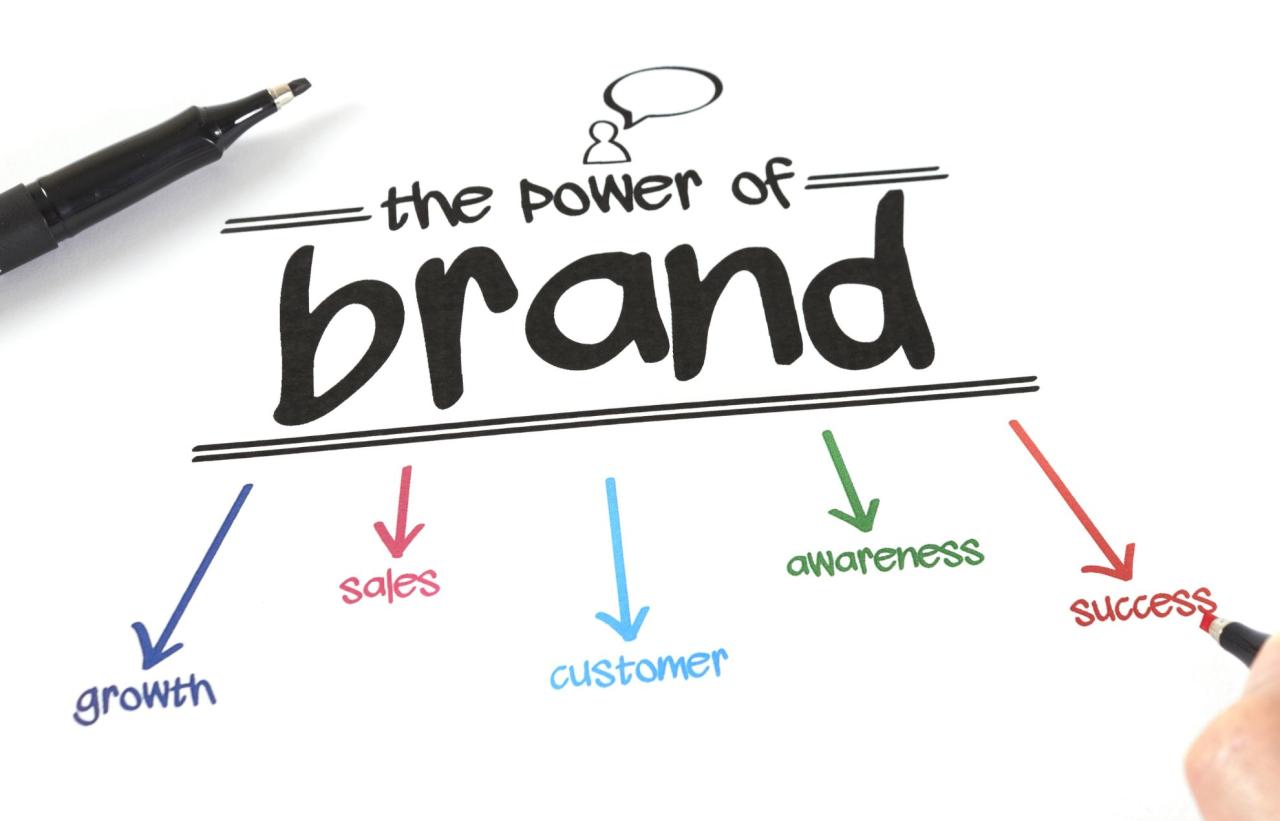
Source: co.uk
In today’s competitive job market, attracting and retaining top talent is crucial for any business’s success. A strong employer brand acts as a powerful magnet, drawing in skilled professionals and fostering a loyal, high-performing workforce. It’s no longer enough to simply offer a competitive salary; candidates are increasingly looking for companies that align with their values and offer a positive and fulfilling work environment.
Building a compelling employer brand is essential to achieving this.A well-defined employer brand significantly impacts a company’s recruitment efforts. It clarifies the company’s culture, values, and employee experience, making it easier to attract candidates who are a good fit. This targeted approach reduces the time and resources spent on screening unsuitable applicants, leading to a more efficient and effective recruitment process.
Moreover, a strong employer brand builds a positive reputation, attracting passive candidates – those who aren’t actively searching for jobs but might be interested in an opportunity with a company they admire.
Employer Brand Examples and Recruitment Success
Several companies have successfully leveraged employer branding to achieve recruitment success. Google, for example, is known for its innovative culture, generous benefits, and commitment to employee well-being. This strong employer brand attracts top tech talent globally, resulting in a highly skilled and motivated workforce. Similarly, Salesforce cultivates a culture of innovation and social responsibility, attracting individuals passionate about making a difference.
Their consistent focus on employee development and career growth further strengthens their employer brand and enhances their ability to recruit and retain high-performing employees. These companies don’t just offer jobs; they offer opportunities to be part of something bigger, contributing to a company with a clear purpose and strong values.
Designing a Recruitment Strategy Leveraging Employer Branding
A successful recruitment strategy built on employer branding involves several key steps. First, defining and articulating the company’s unique employer value proposition (EVP) is crucial. This EVP should highlight what makes the company a desirable place to work, including aspects such as company culture, work-life balance, career development opportunities, and compensation and benefits. Next, this EVP needs to be consistently communicated across all recruitment channels, including the company website, social media platforms, job postings, and employee testimonials.
Authenticity is key; the employer brand should accurately reflect the company’s actual culture and employee experience. Finally, actively soliciting and showcasing employee feedback through platforms like Glassdoor and employee review sites can further build credibility and attract potential candidates. By consistently reinforcing a positive employer brand, companies can create a self-perpetuating cycle of attracting top talent, fostering employee loyalty, and ultimately achieving sustained business success.
Increased Investment and Funding Opportunities: The Benefits Of Branding And Why Businesses Should Bother
A strong brand isn’t just about attracting customers; it’s a powerful magnet for investors. In the competitive landscape of securing funding, a well-established brand acts as a significant differentiator, signaling reduced risk and increased potential for return on investment. Investors are more likely to back companies with a proven track record, and a strong brand is a tangible representation of that success.Investors assess risk meticulously.
A strong brand mitigates this risk by demonstrating market acceptance, customer loyalty, and a clear understanding of the target audience. This translates to higher confidence in the company’s ability to generate revenue and achieve sustainable growth, making it a more attractive investment opportunity. The perception of lower risk directly influences the terms of funding, often leading to more favorable deals for the business.
Brand Equity’s Influence on Business Valuation
Brand equity, the intangible value of a brand, significantly impacts a company’s overall valuation. It’s not just about the assets on the balance sheet; it’s about the reputation, customer loyalty, and market position that the brand represents. This intangible asset can account for a substantial portion of a company’s worth, particularly in sectors like consumer goods, technology, and fashion.
For example, consider the difference in valuation between two companies with similar financial performance but vastly different brand recognition. The company with the stronger brand will almost always command a higher valuation due to its perceived long-term growth potential and stability. A robust brand acts as a safeguard against market fluctuations, making it a safer and more attractive investment.
Examples of Businesses Securing Funding Due to Brand Strength
Several successful businesses have leveraged their strong brand reputations to secure substantial funding. Consider Patagonia, known for its commitment to environmental sustainability and high-quality outdoor apparel. Their strong brand resonates with environmentally conscious consumers, attracting investors who share their values. This brand equity allows them to command premium pricing and attract investors seeking socially responsible investments. Similarly, companies like Apple, with its iconic brand and loyal customer base, have consistently secured significant funding based on their strong market position and brand recognition.
Investors understand the inherent value of a brand with such widespread appeal and trust, leading to favorable investment terms and substantial funding rounds. These examples demonstrate the power of brand reputation in securing investment capital.
Presentation Outlining the Impact of Branding on Investor Confidence
A presentation to investors showcasing the impact of branding would begin by highlighting the key metrics that demonstrate brand strength: market share, customer loyalty, brand awareness, and social media engagement. Visual aids like charts and graphs illustrating these metrics would build confidence. Case studies of successful companies that leveraged their brands to secure funding would further reinforce the message.
The presentation should emphasize the long-term value of brand building and its contribution to reduced risk and higher return on investment. A compelling narrative, showcasing the company’s brand story and its future vision, would conclude the presentation, leaving a lasting impression on potential investors and solidifying the company’s position as a worthwhile investment. The overall message should be that investing in a strong brand is investing in a sustainable and profitable future.
Building a Strong Brand Identity and Visual Elements
Your brand isn’t just a name; it’s a feeling, an experience, and a visual representation that resonates with your target audience. A strong brand identity, built on consistent visual elements, is crucial for standing out in a crowded marketplace and fostering lasting customer relationships. This isn’t just about aesthetics; it’s about strategic communication that reinforces your brand message and values.Consistent visual elements are the bedrock of a memorable and recognizable brand.
Think of it as your brand’s visual language – a consistent vocabulary that speaks volumes without uttering a single word. A well-defined logo, color palette, and typography work in harmony to create a cohesive brand experience across all touchpoints, from your website and social media to your packaging and marketing materials. Inconsistency, on the other hand, can lead to confusion and dilute your brand’s message, making it harder for customers to connect with and remember you.
Logo Design and Variations
The logo is the cornerstone of your visual identity. It’s the single most recognizable element of your brand, and it should accurately reflect your brand’s personality and values. Effective logo design considers simplicity, memorability, and scalability. A good logo works well in both large and small formats, across various media, and remains easily recognizable even when simplified. Many brands also develop logo variations, such as a stacked or horizontal version, to accommodate different usage scenarios.
For example, Nike’s swoosh is instantly recognizable, regardless of its size or placement. Similarly, Coca-Cola’s script logo maintains its distinct character even in a smaller, less detailed format.
Color Palette Selection and Usage
Color psychology plays a significant role in brand perception. Different colors evoke different emotions and associations. For example, blue often represents trust and stability, while green symbolizes nature and growth. A well-chosen color palette should align with your brand’s personality and target audience. Consistency in color usage across all platforms is essential for reinforcing brand recognition.
Consider the vibrant, playful colors used by brands like Lego, contrasted with the sophisticated, muted tones employed by luxury brands like Chanel. This demonstrates how color choices effectively communicate different brand personalities.
Typography Selection and Hierarchy
Typography contributes significantly to a brand’s overall aesthetic and readability. Choosing the right fonts conveys a specific message and enhances brand personality. A brand style guide should define primary and secondary fonts, ensuring consistency in font usage across all materials. Typography hierarchy, using different font sizes and weights, helps guide the reader’s eye and improve readability. For example, a headline might use a bold, sans-serif font for impact, while body text uses a more legible serif font.
Think of the clean, modern typography used by Google, contrasting with the more classic and elegant fonts used by brands like Tiffany & Co. These differences reflect the distinct personalities of each brand.
Brand Style Guide Example
A comprehensive brand style guide provides a clear and concise reference for maintaining visual consistency. Below is a simplified example:Logo Variations: Primary logo (detailed version), secondary logo (simplified version for smaller applications), stacked logo (for vertical applications).Color Palette: Primary color (#007bff – vibrant blue), secondary color (#6c757d – muted gray), accent color (#28a745 – bright green).Typography: Primary font (Open Sans – for body text), secondary font (Roboto – for headlines).
Impact of Visual Consistency on Brand Recognition and Recall
Consistent visual elements significantly impact brand recognition and recall. When customers consistently encounter the same logo, colors, and typography, they begin to associate these elements with your brand. This creates a strong mental link, making it easier for customers to recall and recognize your brand amidst the competition. The more consistently your brand’s visual identity is presented, the stronger this association becomes, leading to increased brand awareness and a more impactful brand presence in the marketplace.
A consistent visual identity builds trust and familiarity, ultimately contributing to stronger customer loyalty and a more successful brand.
Effective Brand Messaging and Communication
Crafting compelling brand messaging is crucial for connecting with your target audience and building a strong brand identity. Effective messaging goes beyond simply stating what your product or service does; it conveys your brand’s values, personality, and unique selling proposition in a way that resonates emotionally and intellectually. This resonates with consumers on a deeper level, fostering loyalty and driving sales.
Successful brand messaging requires a deep understanding of your target audience. Who are they? What are their needs, aspirations, and pain points? What language do they use? By thoroughly researching your audience, you can tailor your messaging to speak directly to them, increasing the likelihood of engagement and conversion.
Examples of Successful Brand Messaging Campaigns
Effective brand messaging campaigns demonstrate the power of clear, concise, and emotionally resonant communication. Consider Dove’s “Real Beauty” campaign, which challenged traditional beauty standards and celebrated real women. The campaign’s authentic messaging resonated deeply with its target audience, building brand loyalty and driving significant sales. Similarly, Nike’s “Just Do It” campaign transcends product promotion; it inspires action and embodies a spirit of perseverance, aligning perfectly with the brand’s athletic ethos.
Apple’s focus on simplicity, elegance, and innovation in its messaging consistently resonates with consumers seeking user-friendly, high-quality technology. These campaigns illustrate the power of aligning messaging with brand values and audience aspirations.
Sample Marketing Copy Demonstrating Effective Brand Messaging
Let’s imagine a fictional company, “CozyKnit,” that sells handcrafted woolen blankets. Here’s how their messaging might look across different platforms:
Website Headline: Wrap Yourself in Comfort. CozyKnit: Handcrafted blankets for a life well-lived.
Social Media Post: Unwind with the warmth of a CozyKnit blanket. Made with love, designed for comfort. #CozyNights #Handcrafted #WoolenBlankets
Email Newsletter: Introducing our new Autumn collection! Experience the luxurious softness of our ethically sourced wool. Shop now and receive 15% off your first order.
These examples showcase a consistent brand voice, emphasizing the handcrafted nature of the blankets and the feeling of comfort they provide. The messaging is tailored to the platform, maintaining a consistent tone while adapting to the specific context.
Maintaining Consistent Brand Voice Across Communication Channels
Maintaining a consistent brand voice across all communication channels is paramount. Inconsistency can confuse customers and damage brand credibility. This requires developing clear brand guidelines that define your brand’s personality, tone, and style. These guidelines should dictate the language used, the visual elements employed, and the overall message conveyed across all platforms, from your website and social media to email marketing and advertising.
Regular internal training and consistent review of marketing materials are crucial for ensuring adherence to these guidelines. By maintaining consistency, you build a recognizable and trustworthy brand identity that fosters customer loyalty and strengthens your market position.
Conclusive Thoughts
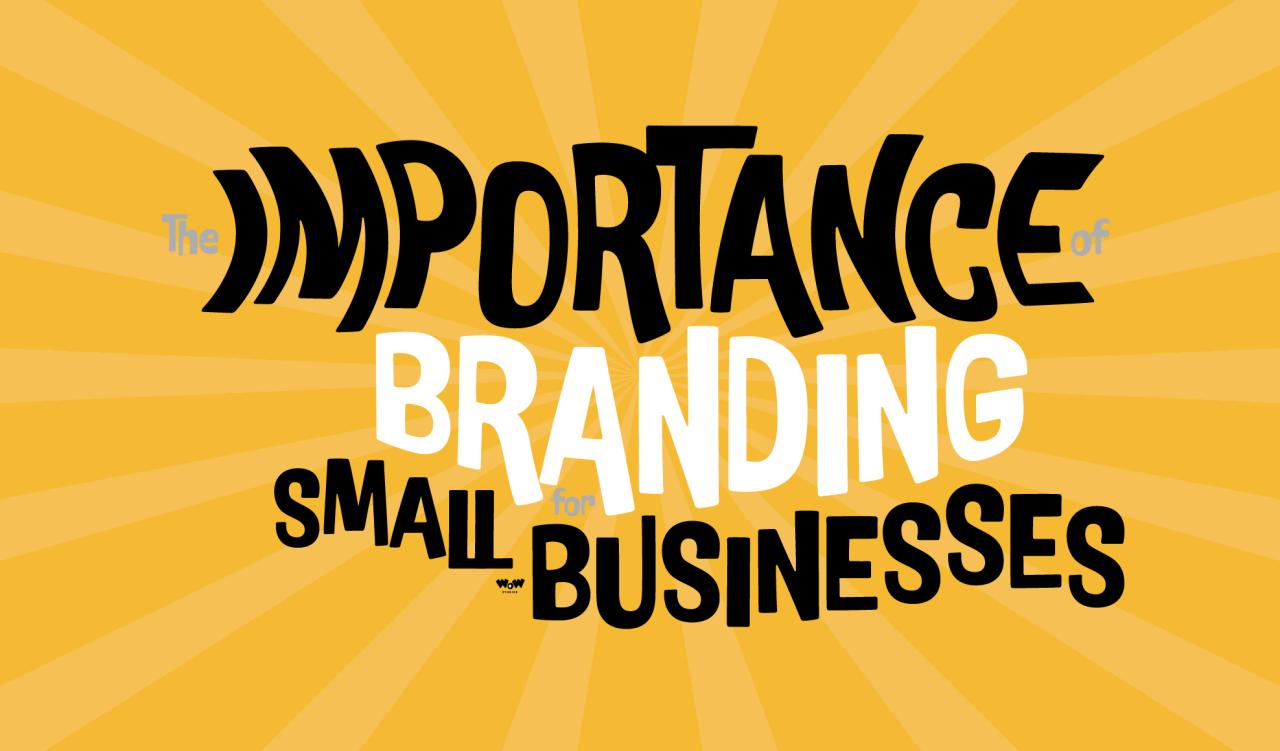
Source: com.au
Ultimately, branding isn’t a luxury; it’s a necessity in today’s competitive market. By investing in a strong brand identity, consistent messaging, and a positive customer experience, businesses can unlock a world of opportunities. From increased profitability and customer loyalty to attracting top talent and securing funding, the returns on a well-executed branding strategy are immeasurable. So, take the time to define your brand, build a strong foundation, and watch your business flourish.
Don’t just sell a product; sell an experience. Don’t just have a logo; have a story.
FAQ Compilation
What’s the difference between branding and marketing?
Branding is about creating a distinct identity and perception for your business, while marketing is about promoting your brand and products to your target audience. Branding builds the foundation, marketing drives the sales.
How long does it take to build a strong brand?
Building a strong brand is an ongoing process, not a one-time event. It takes consistent effort, strategic planning, and adaptation to market changes. While you’ll see early results, long-term success requires sustained commitment.
How much should I invest in branding?
The investment in branding varies greatly depending on your business size, industry, and goals. It’s crucial to allocate a budget that aligns with your strategic objectives and allows for effective implementation of your brand strategy. Consider it an investment, not an expense.
Can a small business benefit from branding?
Absolutely! Branding is crucial for businesses of all sizes. A strong brand helps small businesses compete with larger companies by creating a unique identity and fostering customer loyalty.

